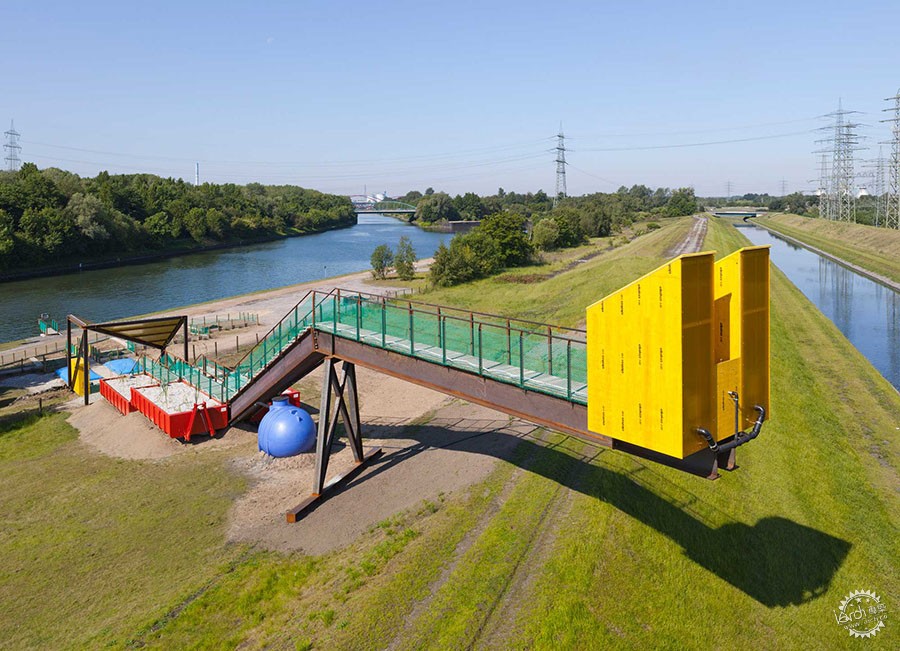
© Roman Mensing
净水对建筑师来说是挑战吗?荷兰工作室Ooze给出了答案
Is Clean Water a Challenge for Architects? Dutch Studio Ooze is Betting On it
由专筑网邢子,李韧编译
在德国埃姆舍尔河和莱茵河之间的一小片土地上,坐落着一座休憩站,其多彩的外观模糊了建筑本身的用途。该建筑物的巧妙设计之处在于它由连接两个厕所的管道组合而成,连接了德国污染最严重的河流埃姆舍河,并最终汇聚到一个小型社区花园和饮用喷泉旁。事实上,这个花园是一个人工湿地,用于收集、处理和清洁厕所和河流产生的废水,使其可以饮用。
On a small strip of land between the Emscher River and the Rhine Herne Canal in Germany sits a rest stop whose colorful appearance belies its radical purpose. The structure’s artful design consists of pipes leading from two toilets and the Emscher (the most polluted river in Germany) that converge at a small community garden and drinking fountain. The garden is, in fact, a manmade wetland that collects, treats, and cleans the effluence from the toilets and river—making it drinkable.
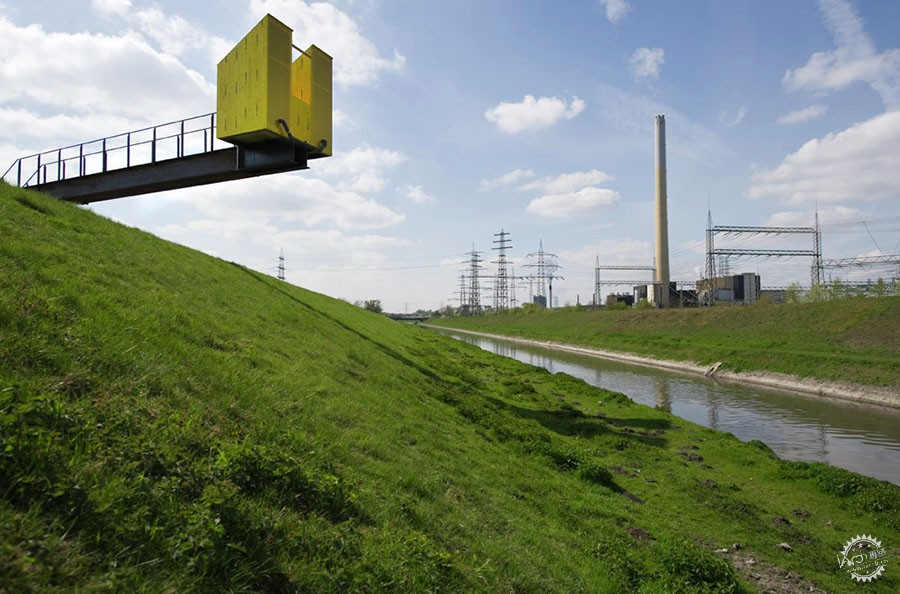
Courtesy of Ooze
2010年名为“Between the Waters”的项目是鹿特丹Ooze Architecture及其两位创始人Eva Pfannes和Sylvain Hartenberg最早的项目。Ooze事务所始终专注于非常具体的目标,即通过观察、模仿和正常化自然发生的水净化过程,找到解决世界清洁水危机的方法。“解决方案已经存在,而且一直存在。”Hartenberg说,“我们一直在使用环境呈现给我们的这些想法,并对其进行修改,然后使得整个系统高效,技术简单,并且易于维护。”
Ooze工作室通过Between the Waters项目展示的人工湿地来表达了他们经常使用的过滤系统。这种人工创造的景观就像筛子一样,通过使用沉积物和植被来分解有毒物质。但与自然生长的湿地不同,这些景观使用特定的沉积物和植物来优化理想微生物所需要的条件,同时阻止了臭虫和有气味的细菌。但它并不能解决全球净水短缺的问题,因为不同的景观和气候需要不同的解决方案。此外,Pfannes和Hartenberg知道许多客户和社区都会质疑他们的提议。Pfannes说:“我们希望在竞标项目时能够拿出小规模的例子,然后根据人口规模对项目进行扩大。”
这种扩大规模的例子可以从Between the Waters之后的几个项目中看到,包括在2012年的项目中,建筑师将他们的研究成果介绍给了里约热内卢政府,希望可以作为解决该市在贫民窟式的居民点寻求清洁用水的方式。“他们对我们正在做的工作非常感兴趣,但是却完全没有资金来实现它。”Hartenberg说道,“所以他们表明,'如果你能找到钱,我们便会支持这个项目。'”
The 2010 project, known as Between the Waters, was one of the earliest projects of Rotterdam-based Ooze Architecture and its two founders Eva Pfannes and Sylvain Hartenberg. Ooze is focused on one very specific goal: finding solutions to the world’s clean water crisis through observing, imitating, and socially normalizing naturally-occurring water purification processes. “The solutions are already there, they’ve always been there, ingrained in nature,” says Hartenberg. “We just use these ideas the environment has presented to us all along, and modify them to make systems that are efficient, low-tech, and easily maintained.”
The constructed wetland—the filtration system on display at Between the Waters—exemplifies the kind of system that Ooze uses often. This artificially-created landscape operates like a sieve by using sediment and vegetation break down toxic substances. But unlike a naturally-occurring wetland, these landscapes use specific sediments and plants that optimize conditions for desirable microorganisms (and deter bugs and odorous bacteria). But it’s not a cure-all for the world’s clean water shortage: Different landscapes and climates require different solutions. Moreover, Pfannes and Hartenberg know that many clients and communities will doubt their proposals. “We wanted to have smaller-scale examples we could point to when bidding for a project or approaching a municipality,” says Pfannes. “They can always be scaled up depending on population.”
That scaling up has manifested itself in several projects since Between the Waters, including a 2012 project in which the duo introduced their work to members of the Rio de Janeiro government as a way to solve the city’s ongoing struggle for clean water in its slum-like unplanned settlements, known as favelas. “They were extremely interested in the work we were doing, but they had absolutely no money to make it happen,” says Hartenberg “So basically they said, ‘If you can find the money we will support you in this radical idea.’”
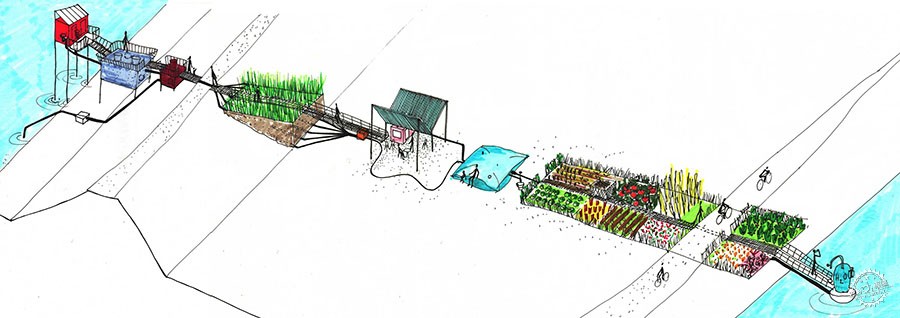
Courtesy of Ooze
因此,建筑师开始寻找资金并实现他们的设计。他们在该项目的前两年与实践者、居民、社区领导以及生态学家交谈,以便更好地了解困扰该地区的问题。“我们让人们说出他们自己关于水资源的问题,并拍成纪录片,同时以此为基础向社区提供解决方案,并展示给欧洲的资助者们。”Pfannes说。
这个名为“águaCarioca”的解决方案基本上是Between the Waters的扩大版本,它位于里约热内卢贫民区内一个两河之间的单一场地上。由于该市附近有受保护的雨林,因此将垃圾运往城外有些困难。Pfannes说:“我们必须就在这里解决问题,就在这个水资源匮乏的地方。”
And so the architects set off to find funding and realize their prototypes. They spent the project’s first two years speaking with activists, inhabitants, community leaders, and ecologists to better understand the issues plaguing the area. “We let people explain all their problems around water themselves, so that became the documentary [film], and based on that, we gave our solutions to the neighborhoods and presented to the funders [in Europe],” says Pfannes.
The solution, named água Carioca, was essentially a larger version of Between the Waters spread over a single site in a Rio de Janeiro favela. Due to the city’s nearby protected rain forests, transporting waste outside the city was out of the question. “We had to solve the problem right where it was, and right where the water was being consumed,” says Pfannes.
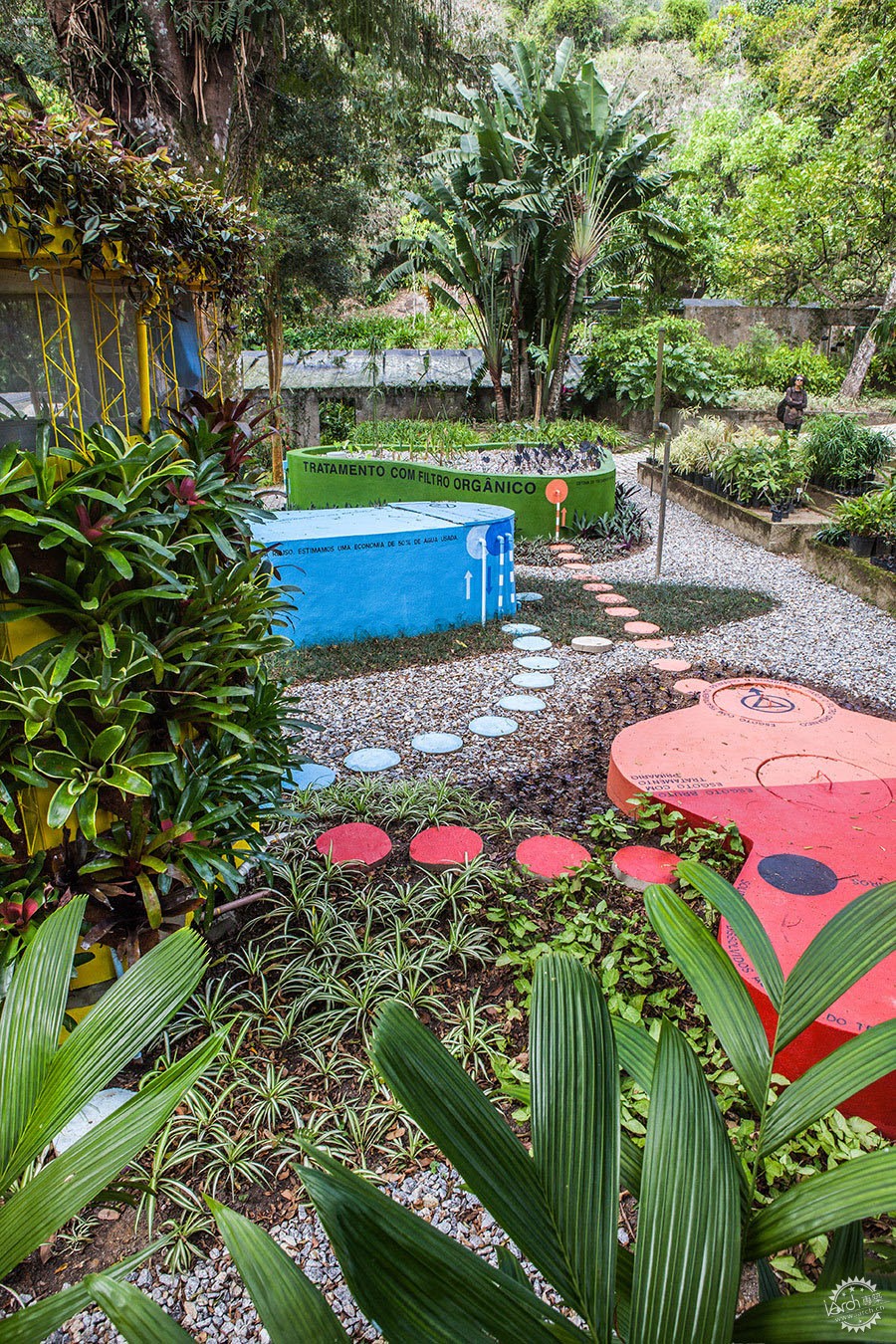
© Raul Correa Smith
这就是人工湿地发挥作用的场所,湿地每天需要大约5平方英尺(约0.46平方米)来过滤一个人产生的废物。由于废水池已经占据了贫民区内的大量空间,Pfannes和Hartenberg知道他们仍然有空间可以运作。Ooze事务所设计的原型将过滤来自贫民窟被污染的溪流和池塘的废物,其中的使用者大约为150人,总量约646加仑。他们从LafargeHolcim基金会那里获得了30000美元的赠款,用于在里约一所学校建造第一个模型。设计实现了,但由于政治上的阻碍,为整个市政区服务的进一步计划被搁置下来。
此后不久,Hartenberg和Pfannes接触了印度钦奈市的项目,他们了解了Ooze事务所的作品,并对防治洪水和干旱的策略非常感兴趣。由于两个月的雨季使得空气非常潮湿,地下排水系统不完整,同时缺乏地表渗透性(钦奈市建筑物密集),该市遭遇了长期的极端洪水泛滥,各处都是有毒、无法饮用的水。随后的旱季又会产生严重的干旱影响。
This is where the constructed wetland came into play: The wetland requires approximately five square feet to filter one person’s waste per day. And with pools of wastewater already occupying a great deal of space within the favelas, Pfannes and Hartenberg knew they had room to operate. Ooze’s prototype would filter the effluence of around 150 people per day (that’s roughly 646 gallons) sourced from the favela’s polluted streams and ponds. Ooze received a $30,000 grant from the LafargeHolcim foundation to build the first prototype in Rio at a school. The design was realized, but further plans to serve the entire municipal district have been put on hold because of political roadblocks.
Shortly thereafter, Hartenberg and Pfannes were approached by the municipality of Chennai, India. They had learned of Ooze’s work and were interested in strategizing against flooding and drought. Due to an intensely wet two-month rainy season, an incomplete underground drainage system, and lack of surface permeability (Chennai is densely built), the city suffers from chronic extreme flooding—deluges that leave pools of toxic, undrinkable water everywhere. The ensuing dry season brings acutes droughts.
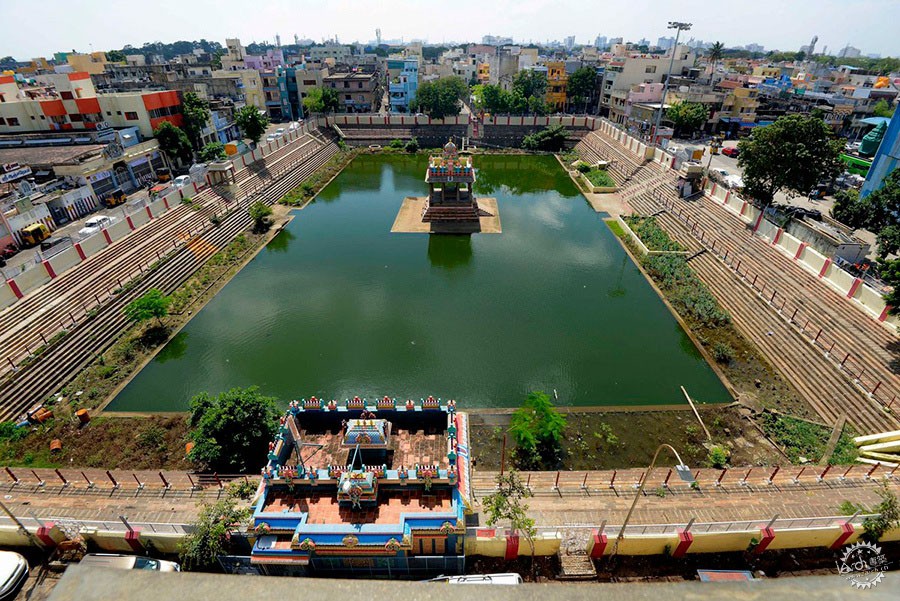
Courtesy of The Hindu Times, via Metropolis Magazine
建筑师再一次转向自然环境寻求解决方案。通过与居民和专家的对话,并分析该地区的现状和历史景观,Hartenberg和Pfannes了解到莫卧儿王朝曾在17和18世纪实施了水管理战略,他们挖掘了数千条沟渠,这些沟渠慢慢让雨水渗透到土地中,恢复城市的地下蓄水层。从那里,净化水可以用井泵抽送上来。“随着城市化进程,这个系统被遗忘了。”Pfannes说,“他们在湖泊上建造并将水转移到其他地方,我们又一次背离了大自然为我们提供的系统。”
Ooze事务所对钦奈市的最终建议是在整座城市建立类似的集水池。一如往常,人工湿地也出现在规划中,在一些地方,它们将协助过滤过程。该项目被恰如其分地命名为“1000坦克之城”,将采取渐进的方式实施。“人们需要习惯他们的用水被公开过滤掉的想法。”Hartenberg说。目前该项目正在全市范围内面向8,000到40万居民进行测试。
Once again, the architects turned to the natural environment for their solution. Through conversations with long-term residents and experts, and analyzing the region’s current and historic landscape, the Hartenberg and Pfannes learned of a water management strategy implemented by the Mughals in the 17th and 18th century, who dug thousands of ditches that slowly allow rainwater to permeate the earth and restore the city’s aquifers. From there, the purified water could be pumped with wells. “With urbanization, this system was forgotten,” says Pfannes. “They built over the lakes and diverted the water where it is basically lost forever; again, we have moved away from the systems nature has provided to us.”
Ooze’s final proposal for Chennai consisted of similar catchment pools throughout the city. True to form, constructed wetlands also make an appearance in the plan: In several places, they would assist in the filtration process. The project, aptly named City of 1,000 Tanks, will take an incremental approach to implementation. “People need to get used to the idea of their water being filtered out in the open,” says Hartenberg. It is currently being tested on scales ranging from 8,000 to 400,000 residents throughout the city.
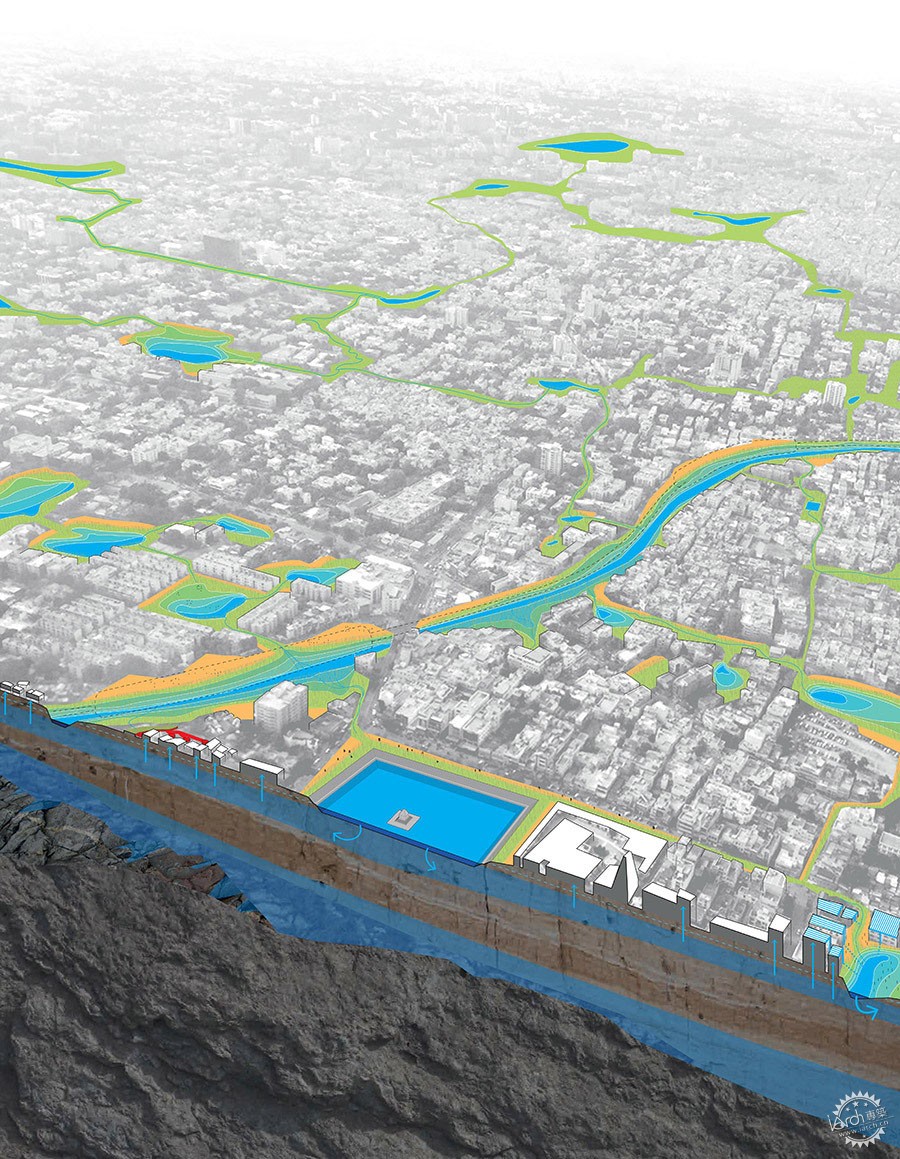
Courtesy of Ooze
最近,他们两人接受了布鲁克林设计中心A/D/O的邀请,为纽约的废水问题进行研究,并提供解决方案。这座大都市有一个经常被雨水淹没的综合排水系统,导致了雨水和污水混合排入了East河以及其他天然水体。Ooze事务所的“Every Other Street”方案将数千条城市街道变成多孔表面,吸收雨水,从而减少溢流和城市对硬件基础设施的依赖。
虽然“Every Other Street”方案的广泛实现还很遥远,但该项目突出了回归自然对高密度规划的纽约市的帮助,就像它对于里约热内卢和钦奈市的帮助一样。“通过重新设计街道,让纽约城市和人民更接近大自然。我们有能力防止污染,同时改善生活方式。”Hartenberg说,“这是一个尊重自然的过程。”
Most recently, the duo were invited by the Brooklyn design center A/D/O to develop and present a solution for New York’s wastewater challenges. The metropolis has a combined sewer-rainwater draining system that’s frequently overwhelmed by rain, leading to discharges of mixed stormwater and sewage into the East River and other natural water bodies. Ooze’s Every Other Street proposal recommends turning thousands of city streets into porous surfaces that absorbs rainwater, thereby reducing overflows and the city’s dependence on hard infrastructure.
Although the wide-spread realization of Every Other Street is far-fetched, the project highlights how a return to nature could benefit highly-planned New York the same way it has aided Rio de Janeiro and Chennai. “By just bringing New York and New Yorkers a little closer to nature through the redesign of their streets, we have the power to prevent pollution, and impart an improved lifestyle all at once,” says Hartenberg. “It’s just about listening to what nature wants.”
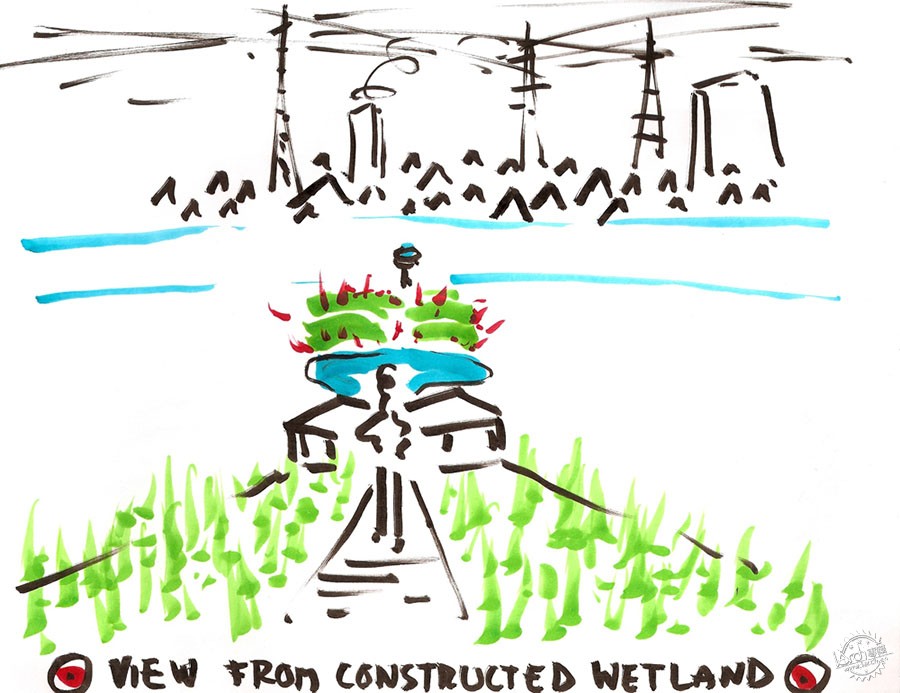
Courtesy of Ooze
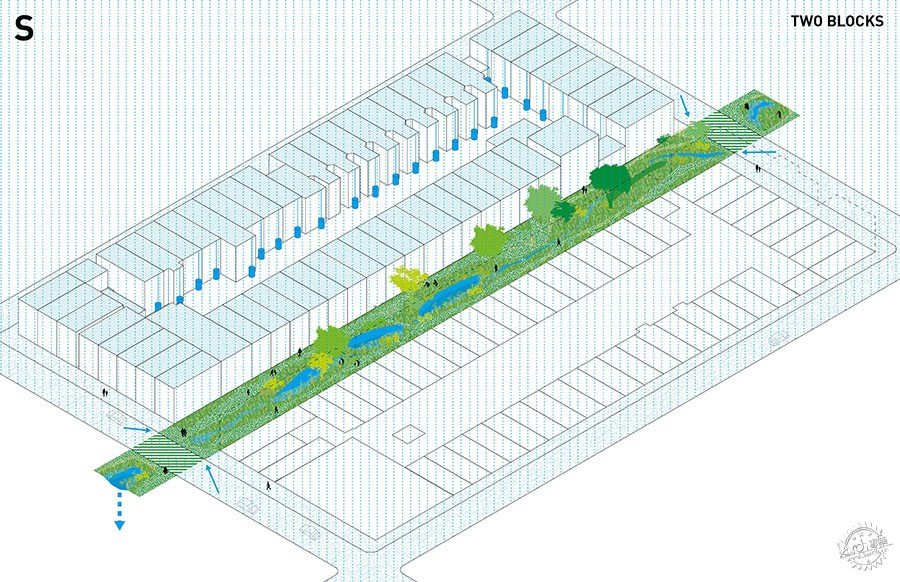
Courtesy of Ooze
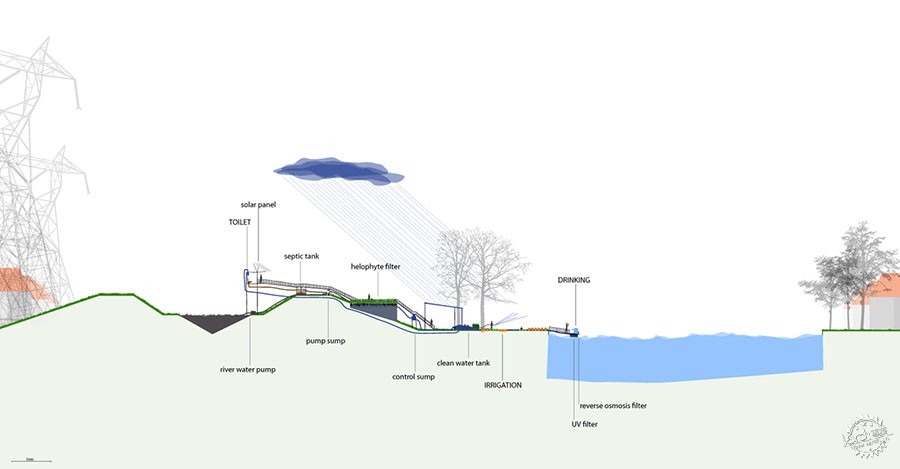
Courtesy of Ooze
|
|
